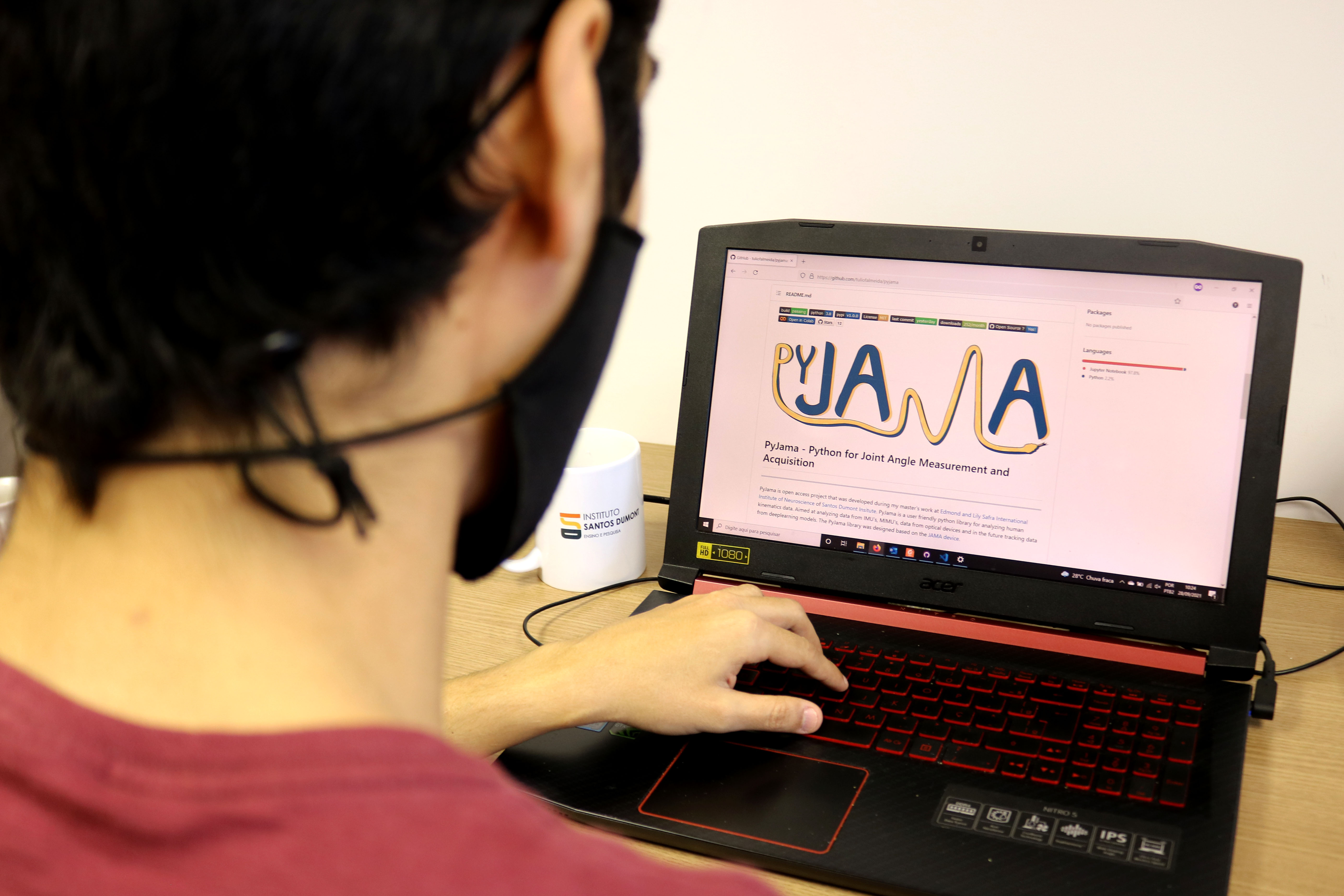Have you ever imagined the importance of measuring the angles of your body's joints? This may not be a typical thought for a large part of the population, but, for those who work with physical rehabilitation, this measurement represents relevant data for treating patients. Developing an accessible and low-cost system capable of making this estimate to help with rehabilitation and improve physical performance in physiotherapy was the objective of master in Neuroengineering Túlio de Almeida, 27.
Published in the international scientific journal Sensors with the title “Development of low-cost open-source measurement system for joint angles estimation” [“Development of a low-cost open source measurement system for estimating joint angles”, in free translation], the codes and methods found by the neuroengineer to measure joint angles after two years of research at the Santos Dumont Institute (ISD), in Macaíba (RN), were made available free of charge on the GitHub platform, a code and file hosting platform that allows users to contribute from anywhere in the world. “The gold standard equipment currently available is extremely expensive, costing up to R$ 50 thousand. With our research, we created an accessible and efficient system”, declares the researcher. Unlike existing devices on the market, the one developed at ISD has an average cost of R$ 130 (U$ 24).
The system, called Joint Angle Measurement and Acquisition Device (JAMA), consists of two parts: low-cost hardware used to estimate angles and open software for data processing, the Python for Joint Angle Measurement and Acquisition (PyJama). To prove the concepts applied in the construction of the device and its effectiveness, two experiments were carried out: “In the first, we aimed to test both the software and the hardware in controlled situations”, explains Túlio. For this, Lokomat was used, a robot used in the rehabilitation of people that performs controlled flexion and extension movements of the limbs. “We configured the robot for a movement with an amplitude of 60 degrees, and we managed to find an angle of 58.2 degrees, which is a very good result for a controlled step”, he adds.
Proof
The second experiment involved putting the technology to the test in a real situation. “We wanted to evaluate a person’s knee joint while walking. As we did not have a gold standard device to compare the results, we used another form of evaluation, which was video. In this format, we also had good results, with angulations compatible with those of walking”, says Túlio.
To overcome the lack of a gold standard device that could be used to compare the results obtained by Jama and the data processing carried out by Pajama, the researcher resorted to a third experiment. “I looked for a database in the literature that had the same type of data that we were using, but from gold standard devices. We had an error of 0% in the first analysis and, for the second type of analysis, we had an average error of 2%, which indicates that the software can process this data”, he states.
Túlio's advisor during his master's degree and co-author of the article published in the journal Sensors, ISD professor-researcher, André Dantas, highlights that the research is part of a broader project, which involves other researchers and has the central objective of developing technologies that can help in the rehabilitation of patients with spinal cord injury. “There are several parts of research that complement each other and will allow the existence of a system that is accessible and easy to use for rehabilitation”, he states.
open code
The open source model, or Open Source, used by the neuroengineer to develop the system, consists of free licensing and universal redistribution of what was developed, without the need to pay for licenses and with the possibility of adopting a collaborative intellectual production model. Platforms like GitHub, which brings together more than 65 million developers from around the world, allow the publication of codes and methods.
The decision to use the open source model, according to the researcher, came when, during the research, he came across many publications about existing advances in the area, but few with methodologies that explain the path taken to reach them. “Whenever you go to do something in this area, you end up having to take a step or two back to redo something that someone else has already done, and only then can you start your research. The idea of open source is to leave open the way in which the system is built so that it can even be used as a model to develop other methods, since the algorithms have several applications”, highlights Túlio.
According to him, in countries like Brazil, where investment in the areas of science and technology is still small compared to the national potential, the publication of open codes increases access for researchers and developers to content and enhances scientific production.
Text: Mariana Ceci / Ascom – ISD
Photograph: Mariana Ceci / Ascom – ISD
Communication Office
comunicacao@isd.org.br
(84) 99416-1880
Santos Dumont Institute (ISD)
It is a Social Organization linked to the Ministry of Education (MEC) and includes the Edmond and Lily Safra International Institute of Neurosciences and the Anita Garibaldi Health Education and Research Center, both in Macaíba. ISD's mission is to promote education for life, forming citizens through integrated teaching, research and extension actions, in addition to contributing to a fairer and more humane transformation of Brazilian social reality.















